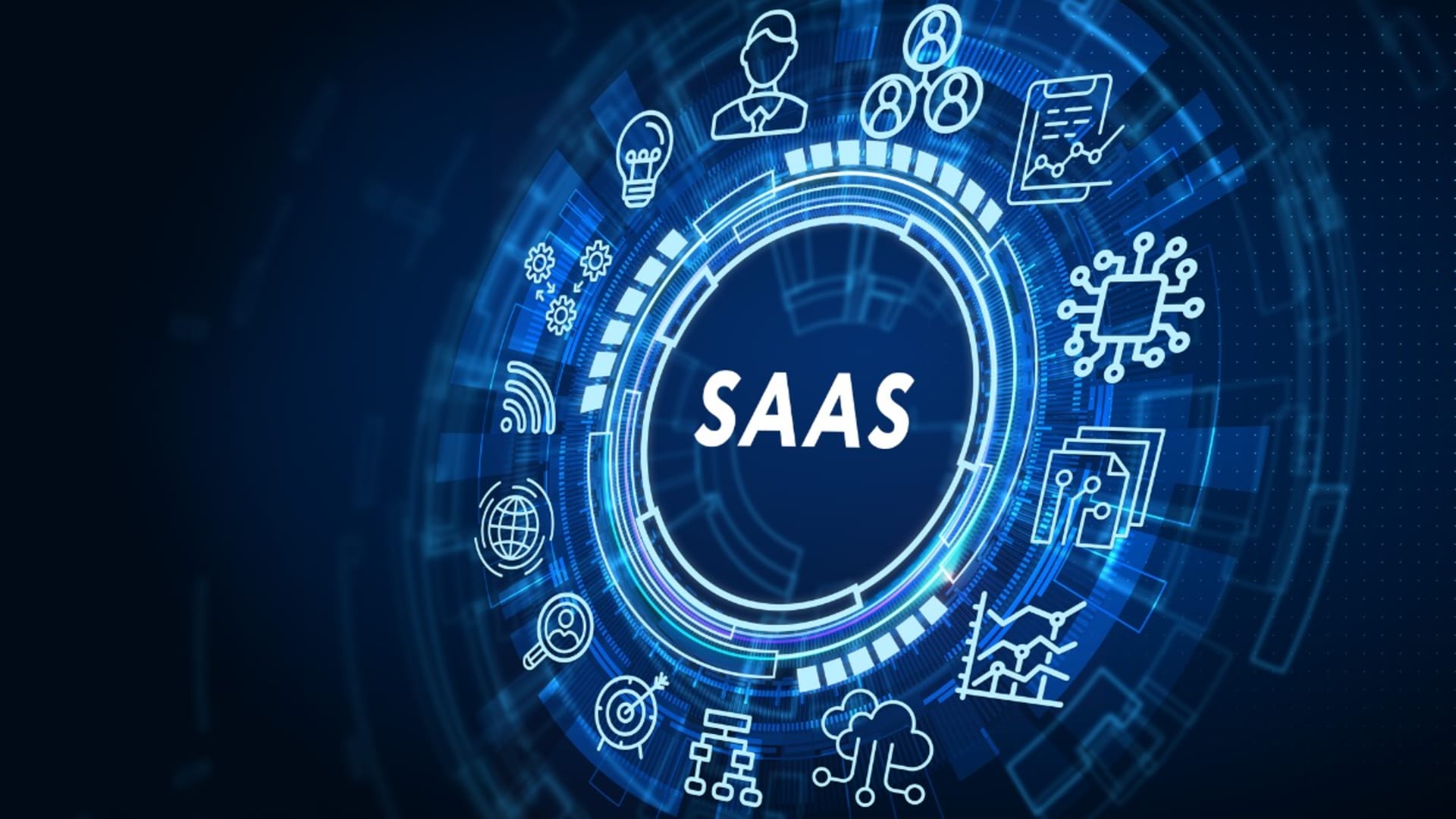SaaS Development Company
Access the top 1% of LATAM tech talent within 2 weeks. Build flexible software as a service (SaaS) platforms with nearshore, senior developers.
500+ companies rely on our top 1% tech talent.
SaaS Development Services We Provide
Custom SaaS Application Development
Build scalable, custom SaaS products that are accessible from any location with an internet connection.
Using languages like Python, Java, and Ruby, we support the full lifecycle of SaaS development from ideation to launch.
UI/UX Design for SaaS
SaaS solutions must be seamless, intuitive, and responsive. Translate complex processes into an engaging experience that drives user satisfaction and retention.
Our designers use tools like Sketch and Figma to build comprehensive wireframes and effective prototypes. We gather and leverage user feedback through platforms like Hotjar and Lookback to continuously improve the application.
SaaS Integration Services
Ensure seamless data flow between cloud-based services. Facilitate smooth connections between your platform and third-party APIs.
Leveraging tools like Zapier and Mulesoft, we connect SaaS apps to various platforms in cloud environments.
SaaS Migration Services
Transfer between cloud providers or transition away from on-premises infrastructure without disrupting your operations.
We perform the data migration, application refactoring, and re-hosting with AWS Migration Hub or Azure Migrate to ensure your SaaS application continues to run without interruption.
Cloud-Based SaaS Applications
Cloud-based solutions allow you to scale up or down on demand, keeping your business operations and services elastic.
Our SaaS developers focus on performance, scalability, and resilience. We employ containerization and orchestration technologies like Docker and Kubernetes to create distributed and resilient systems.
API Development for SaaS
Well-designed APIs are the backbone of your SaaS architecture. We build robust, secure APIs that allow your application to communicate with and enhance other platforms.
With tools like Postman, RAML, and Spring Boot, we design, develop, and test your APIs to create a more efficient ecosystem.
Rolls Royce case study
Rolls Royce turned to BairesDev to develop an efficient, user-friendly mobile app. A two-week discovery process with the Rolls Royce product owner identified a comprehensive list of functionalities, data streams, and displays required to meet their clients’ expectations for a mobile SDS. Read the entire Rolls Royce case study.

Key Things to Know About SaaS Development
Best Practices for SaaS Development
A multi-tenant design is a foundational characteristic of SaaS. It allows a single instance of your application to serve multiple customers or “tenants.” Each tenant’s data and configurations are isolated but leverage a shared infrastructure, increasing efficiency.
Microservices architecture breaks apart a SaaS application into a collection of loosely coupled services. Teams can develop, deploy, and scale services independently, representing different functions.
Regularly perform load testing during development to understand how the application performs under stress. Make sure to scale horizontally, adding more instances of resources instead of adding power to existing ones.
Data breaches can be catastrophic, so businesses must be proactive by implementing multi-factor authentication, granular access control, and robust encryption protocols. Regularly audit your security and perform penetration testing to find weak points.
Adhere to regulations like GDPR, HIPAA, and SOC2 to ensure data privacy and establish trust with your users. Integrate these privacy standards into the development process from the beginning, and be as transparent as possible with customers.
No system is immune to failure or breaches, no matter how much effort goes into security. Disaster may eventually strike, and you have to be ready. Schedule regular automated backups of mission-critical data and integrate redundant systems or failover protocols to avoid downtime.
Create an intuitive, engaging experience that is consistent across devices. Involves real users in the design and feedback process. Your SaaS software should be engaging—not just efficient.
An application’s perceived responsiveness is one of the most critical user experience metrics. The SaaS development team must write clean, efficient code and employ load balancing to avoid slowdowns or bottlenecks.
Use live, real-time data to plan and design updates and optimizations. Usage patterns can reveal areas that need improvement or inspire additions of new features.
CI/CD pipelines should automate testing and deployment, meaning more time and resources are spent on developing features than fixing bugs.
Add feature flags to toggle and test functionality without new code and break the development process into smaller segments for faster deployment.
Data visualization can help you interpret complex analytics, make better decisions, and understand user behavior.
Create and manage multiple support channels (chat, email, and phone) to limit customer wait times. The longer consumers wait for a fix, the more time they have to consider whether the product is worth the investment.
As your customer base grows, scale your operations and team as needed, working with your service provider. Routinely audit your resource allocation to catch any leaks. Operational costs can balloon without warning if not kept in check.
Stay up to date with new technologies and support any professional development efforts team members want to pursue. This facilitates better team performance and development efforts.
Why Choose BairesDev for SaaS Development Services

Top 1% of Tech Talent
We only hire the top 1% of SaaS developers across LATAM. They have, on average, ten years of experience and have already been vetted for soft skill compatibility, meaning they can integrate with any team or operate as an end-to-end outsourced solution.
Flexible Engagement Models
Does your in-house team need support in a specific niche or a long-term partnership to design an application from the ground up? Our flexible engagement models—staff augmentation, dedicated teams, and end-to-end software outsourcing—mean you can get the help you need.
Robust Security Measures
Your data is safe with data encryption protocols, multi-factor authentication, and secure code repositories. We enforce strict NDAs and add security protocols to all employee devices.
Our process. Simple, seamless, streamlined.
During our first discussion, we'll delve into your business goals, budget, and timeline. This stage helps us gauge whether you’ll need a dedicated software development team or one of our other engagement models (staff augmentation or end-to-end software outsourcing).
We’ll formulate a detailed strategy that outlines our approach to backend development, aligned with your specific needs and chosen engagement model. Get a team of top 1% specialists working for you.
With the strategy in place and the team assembled, we'll commence work. As we navigate through the development phase, we commit to regularly updating you on the progress, keeping a close eye on vital metrics to ensure transparency and alignment with your goals.
FAQs
What should I look for when choosing SaaS solutions to ensure the best fit for my business needs?
Look for an experienced SaaS development company with expertise in your industry, a strong portfolio of successful SaaS product development, positive client testimonials, scalable solutions, and good post-development support.
What is SaaS software development and how is it different from traditional software development?
SaaS development focuses on creating web-based applications hosted centrally and accessed via the internet. Unlike traditional software, it's updated and maintained by the provider, offers scalability, and typically follows a subscription model.
What are the critical components of a successful SaaS solution?
The key components of a successful SaaS solution include a user-centric design, robust security features, scalable architecture, seamless integration capabilities, and reliable performance. Adhering to the SaaS business model, these components are essential for meeting the evolving demands of the software industry, ensuring that the solution remains flexible, efficient, and relevant to users' needs.
How Businesses Can Overcome the Software Development Shortage
BairesDev Ranked as one of the Fastest-Growing Companies in the US by Inc. 5000

See how we can help.Schedule a Call










